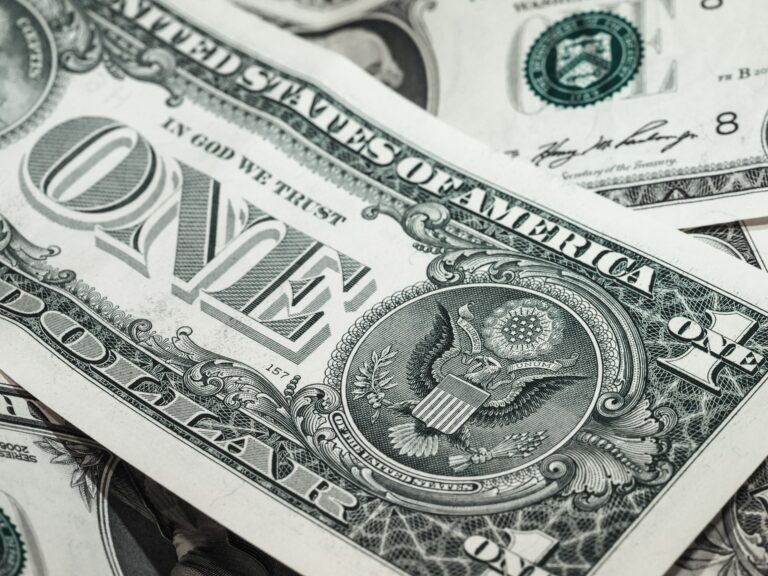
Morning Brief – Tuesday 6th
Yesterday the exchange rate between the US Dollar and the Chinese Renminbi broke through the 7.0 threshold for the first time since 2008. An initial glance at market action yesterday: Pound down, global equities some 2% off their opening price and defensive havens rallying might seem like overkill as a reaction to the Yuan falling by around 1.6% in a day. After-all, the move didn’t even violate the People’s Bank of China’s constraint of a 2% move versus the day’s rate setting! But, trust me, it’s a big deal:
7 Chinese Renminbi, onshore or offshore, to one US Dollar has been a huge psychological barrier and has only broken a handful of times in decades. Most recently it took the full weight of the financial crisis to provide conditions under which the Chinese currency could devalue to these levels. Authorities have blamed trade tariffs as a cause for a lack of international demand for the domestic currency but data shows otherwise. Even though pressure is mounting on China exports have remained resilient. So it’s a move then, a retaliation of a country against the wall yet again in negotiations with President Trump that, guess what, has largely run out of US exports to China to slap its own tariffs on! The reason for the severe global market correction yesterday is that turning to currency explicitly brings another weapon into the trade war.
China has still been defending their currency this month. In fact, data shows that the PBoC managed to ditch $107bn in exchange for Yuan in order to defend the level. There’s plenty left in the tank but persistent pressure from a financial community that had believed 7 would be broken as a result of the bilateral political dispute has afforded China a blanket to hide behind as it brings out its weapon. China has devalued to make its exports cheaper and therefore more competitive. Consider a case in which Trump slaps 25% tariffs on everything to force China’s hand into a trade deal with the United States. With USDCNH at 6.9 as it was a few days ago, a 1m Yuan Chinese export to, say, the United States not under the influence of tariffs yet costs a few tenners short of $145,000.00. Now introduce tariffs, assuming the exchange rate stays stable, the cost of the good is just shy of 160k under the 10% tariff, 167k under a 20% tariffs and under the highest threshold of 25%, the export costs a US importer >181k, at which point other nations’ exports start to appear cheaper (probably). But, if the PBoC allows the Renminbi to gradually devalue as the trade war ratchets up, Tariff Man’s questionable weapon of choice becomes impotent. For tariffs of 10; 20; 25% just devalue your currency to 7.59; 8.28; 8.625 Renminbi per US Dollar respectively and Trump will have to go and pick on someone else! There are risks to this strategy but China looks to be bringing currency to the table.
It seriously freaked markets out, the yield on a US ten year treasury fell and the spread between different durations of US treasuries, a key indicator of economic risk, in one case fell to levels not seen since 2007. This move is a clear sign that investors are fearing that the trade war could seriously hurt global growth and simultaneously increases the likelihood of a recession. The decrease in US yields gave net support to the Euro as spreads between negative-yielding Eurozone debt fell as treasuries plunged. Trump’s not happy, he’s already told us that, and he thinks China’s apathy to the FX events that yesterday brought amounts to currency manipulation. Let’s see if the rally in the Japanese Yen amongst other safehaven currencies is justified and if the trade war kicks off even further. It’s worth noting that traders yesterday moved to price in a 40% probability of another rate cut during the Federal Reserve’s September meeting. Remember what we said last time they cut..? That markets forced the Fed’s hand and that’s why Powell flinched..? Well similar price action is happening once again suggesting the Dollar could weaken off in the medium term.
Discussion and Analysis by Charles Porter

Click Here to Subscribe to the SGM-FX Newsletter
Related Insights

Morning Brief – Parity
Parity As we brought to you earlier this week, there is an increasing chatter in the market about whether EURUSD has the momentum to challenge parity once again. At face value, of course, this would create a meaningful value change in the world’s foremost currency pair which has already seen a significant exodus of value […]

Morning Brief – US Dollar
US Dollar Surging on a strong US economy together with further geopolitical tensions in the past week, USD is at its strongest versus EUR this year and came within a whisker of breaking through 1.06 in yesterday’s trading. Against the Japanese Yen USD was 154.55 which caused Japanese Finance Minister Shunichi Suzuki to break cover […]

Morning Brief – France
France Quite simply the numbers do not add up for President Macron and his future in government, never mind La Belle France and its citizens : France is the third most indebted EU country after Greece and Italy with a debt to GDP ratio of 110.6%. In the past year the deficit has increased by […]



 Charles Porter
Charles Porter Humphrey Percy
Humphrey Percy